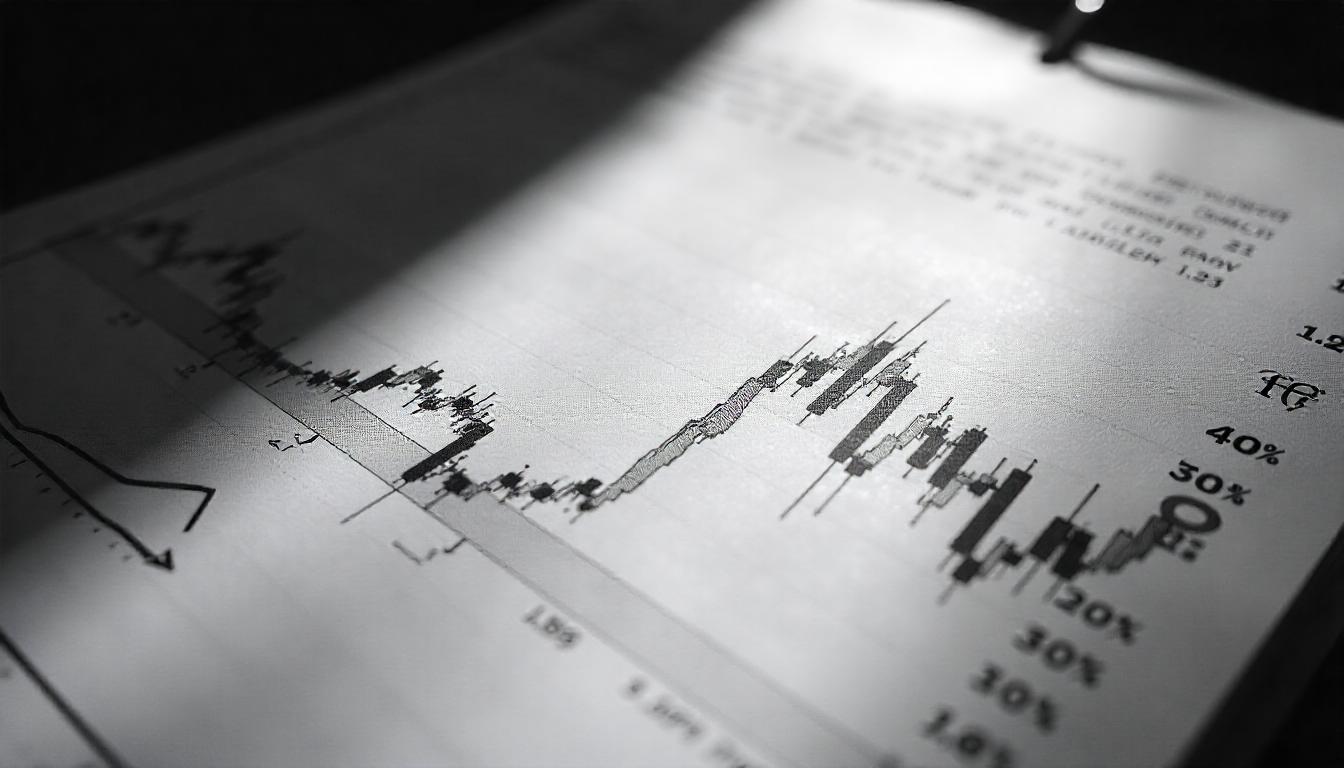Artificial intelligence (AI) is revolutionizing quantitative trading, redefining how financial markets operate, and adapt to a data-driven future.
As markets grow more intricate and dynamic, the sheer volume and complexity of financial data have outpaced traditional statistical approaches. AI, with its ability to uncover nuanced patterns and predict trends, offers traders a decisive edge that creates a seamless path for traders to enhance productivity and ROI.
Below, we’ll explore five crucial AI applications that are reshaping quantitative trading and how they might keep improving in the future.
1) Predictive Analytics for Market Trends
Predictive analytics leverages AI and machine learning to forecast future market behavior based on historical and real-time data.
Unlike traditional methods, AI can identify subtle patterns, correlations, and anomalies across vast datasets, enabling traders to anticipate price movements, market shifts, and volatility before they occur.
How It Works
- Data Collection: AI systems gather extensive financial data, including price histories, trading volumes, economic indicators, and even unconventional data sources like social media trends and news.
- Feature Engineering: Key variables (features) are extracted and processed to identify relevant patterns or triggers for market behavior.
- Model Training: AI models, such as neural networks or regression algorithms, are trained using this data to recognize trends and correlations.
- Real-Time Forecasting: Once trained, these models continuously analyze live market feeds, offering actionable predictions with minimal latency.
Real-World Use Case:
A trading team focusing on tech stocks. They integrate an AI-powered sentiment analysis tool that processes news articles, social media posts, and earnings announcements in real time.
- Data Processing: The AI scans thousands of tweets, articles, and forums for mentions of a major tech company, assessing sentiment using natural language processing (NLP).
- Action Taken: The AI assigns a score indicating whether the sentiment is bullish, bearish, or neutral. For example, after a new product announcement, 80% of social media sentiment is positive.
- Outcome: Based on the positive sentiment and historical patterns of stock movements post-announcement, the team buys shares early.
By using real-time AI analytics, the team minimizes guesswork and acts decisively based on data-driven insights.
Expectations for the Future
- Increased Precision: As data quality improves, predictive analytics will offer even more accurate forecasts, reducing uncertainty for traders.
- Customization: AI will enable personalized predictions based on a trader’s strategy, risk tolerance, and market focus.
- Integration of Alternative Data: The inclusion of unconventional datasets, like satellite imagery and ESG (environmental, social, governance) metrics, will uncover new predictive opportunities.
- Scenario Planning: Predictive analytics will simulate multiple future scenarios, allowing traders to prepare for various market outcomes.
2) Risk Management and Anomaly Detection
AI-powered risk management goes beyond traditional risk models by incorporating real-time data streams, enabling traders to detect and respond to unusual market conditions quickly.
These tools use machine learning to uncover hidden risks that conventional methods might overlook, such as correlations that suddenly change or unexpected liquidity shocks.
How It Works:
- Multi-Layered Analysis: AI models integrate data from multiple sources, including price movements, trading volumes, sentiment analysis, and macroeconomic indicators.
- Pattern Identification: Machine learning algorithms continuously learn from historical and real-time data, spotting anomalies like flash crashes or spikes in volatility.
- Proactive Alerts: Traders receive real-time notifications to mitigate losses or adjust strategies when potential risks are identified.
Real-World Use Case:
A global asset management firm employs an AI-driven platform to oversee its equity portfolio. During the 2020 COVID-19 pandemic, the platform detected abnormal correlations between technology stocks and traditional safe havens like gold.
- AI Insight: Historical data revealed these correlations were unprecedented and likely temporary.
- Action Taken: The firm reduced exposure to overvalued tech stocks and increased its position in gold and cash equivalents.
- Outcome: While the market corrected, the firm avoided heavy losses and maintained a balanced portfolio.
Expectations for the Future:
The future of risk management will see AI integrating with blockchain to offer transparent, immutable risk assessments. Additionally, AI will likely evolve to assess geopolitical risks in real time, providing even more robust defense mechanisms for traders.
3) Portfolio Optimization Using AI
AI-driven portfolio optimization uses advanced algorithms to manage assets more effectively, tailoring strategies to the unique goals and risk tolerances of traders. Unlike traditional approaches, AI dynamically adjusts portfolios in response to real-time market data.
How It Works:
- Customized Modeling: AI creates personalized optimization models based on investor preferences, such as risk aversion or return targets.
- Real-Time Rebalancing: Portfolio weights are continuously adjusted to reflect changing market conditions.
- Scenario Testing: Simulations evaluate how portfolios perform under various economic scenarios, enabling more informed decisions.
Real-World Use Case:
An institutional investor managing a multi-asset portfolio uses AI to optimize performance during a period of rising interest rates.
- Scenario: The AI detects that certain bond sectors are underperforming while equity markets remain strong.
- Action Taken: The portfolio shifts toward dividend-paying stocks and away from long-term bonds.
- Outcome: This dynamic allocation strategy outperforms traditional 60/40 portfolios by adapting to macroeconomic changes.
Expectations for the Future:
AI will play a crucial role in integrating alternative data, such as ESG (Environmental, Social, Governance) metrics, into portfolio optimization. This could enable traders to align financial goals with ethical considerations while maximizing returns.
4) High-Frequency Trading (HFT) with AI
AI enhances HFT by improving the speed, accuracy, and profitability of trades. HFT involves executing thousands of trades per second to capitalize on minuscule price discrepancies.
How It Works:
- Order Book Analysis: AI scans the depth of the market to identify profitable arbitrage opportunities.
- Latency Reduction: Machine learning models optimize execution speed by reducing communication delays between trading systems.
- Execution Algorithms: AI ensures trades are executed at the best possible price, minimizing slippage and maximizing profit.
Real-World Use Case:
A proprietary trading firm employs AI in HFT for arbitrage across cryptocurrency exchanges.
- AI Insight: The algorithm spots a 0.3% price discrepancy in Bitcoin prices between two crypto exchange platforms.
- Action Taken: AI executes a buy order on the lower-priced exchange and a simultaneous sell order on the higher-priced one.
- Outcome: Thousands of such trades over a week result in substantial cumulative profits with minimal risk.
Expectations for the Future:
As quantum computing becomes mainstream, HFT will achieve even greater speed and accuracy. AI will also integrate ethical considerations, ensuring fairness and transparency in financial markets.
5) Dynamic Pairs Trading
Pairs trading involves buying and selling two correlated assets to profit from temporary price divergences. AI refines this strategy by dynamically identifying and adjusting to evolving relationships between asset pairs.
How It Works:
- Correlation Monitoring: AI continuously evaluates the strength and stability of correlations between assets.
- Dynamic Updates: When correlations weaken or break, AI identifies new asset pairs or recommends adjustments to existing pairs.
- Execution: Trades are executed to exploit mean reversion, maximizing gains while minimizing risks.
Real-World Use Case:
A quantitative hedge fund uses AI for pairs trading in the oil and gas sector.
- Scenario: AI notices that while ExxonMobil and Chevron have historically traded in tandem, Chevron’s pivot to renewables has weakened this relationship.
- Action Taken: The fund adjusts its strategy to include ExxonMobil and another oil-focused company with similar fundamentals.
- Outcome: The strategy remains profitable as AI dynamically adapts to shifting market correlations.
Expectations for the Future:
AI will expand pairs trading into non-traditional markets, such as carbon credits or water futures. The ability to process unstructured data, like climate reports, will enable even more sophisticated and profitable strategies.



